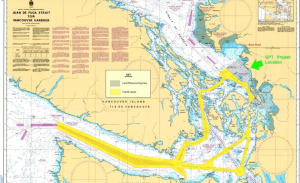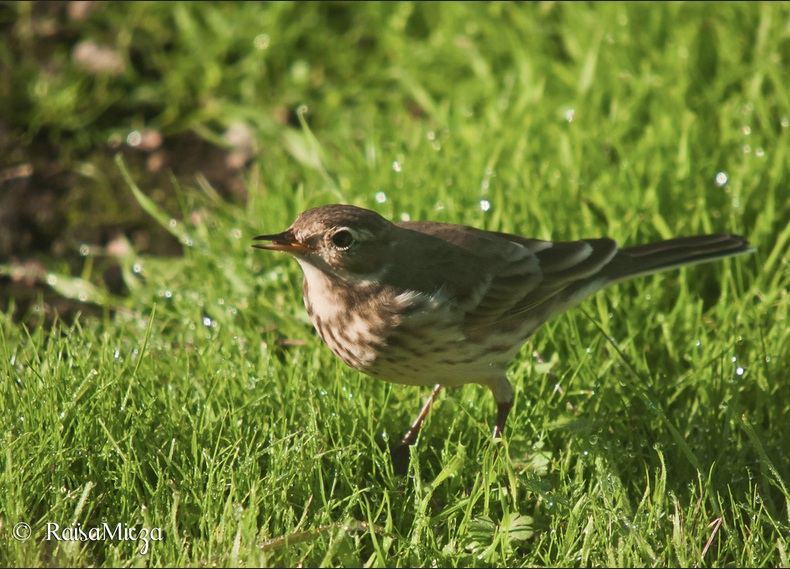 These references on oil spills and oil spill risk are included on the Metchosinmarine.ca website.
These references on oil spills and oil spill risk are included on the Metchosinmarine.ca website.
Included is the reference “ The Metchosin Shoreline : What do we have to Lose?”


Raisa Mirza in the fall of 2010 took this image of an American Pipit at Race Rocks.
8 individuals of this species were recorded on the VNHS Field Trip, Sept 27 2014.

Photo of American Pipit by Daniel;e Donecke on the VNHS FIeld Trip, Sept 2014
| Scientific classification | |
|---|---|
| Kingdom: | Animalia |
| Phylum: | Chordata |
| Class: | Aves |
| Order: | Passeriformes |
| Family: | Motacillidae |
| Genus: | Anthus |
| Species: | A. rubescens |
Other Members of the Class Aves at Race Rocks.
and Image File |
 The Race Rocks taxonomy is a collaborative venture originally started with the Biology and Environmental Systems students of Lester Pearson College UWC. It now also has contributions added by Faculty, Staff, Volunteers and Observers on the remote control webcams. The Race Rocks taxonomy is a collaborative venture originally started with the Biology and Environmental Systems students of Lester Pearson College UWC. It now also has contributions added by Faculty, Staff, Volunteers and Observers on the remote control webcams. |
Oct 30, 2012 –Garry Fletcher
Today Chris Blondeau,. and Courtney Edwards took Martin Haulena , and Joe Gaydos to Race Rocks to meet with Ecoguardian Anne Stewart and take stock of the facility and make plans for how to deal with the plastic neck bands that we have are observing with the onset of the large numbers of sealions each year.
Martin is the Head Veterinarian at the Vancouver Aquarium, Joe is with Sea Doc Society in the San Juans and with U.C. Davis , California.

Martin, Courtney, John, former PC student from Wales and friend who are volunteering this term at the college.
If you click on the category “Oil Spill Risk” you may have some appreciation for the potential hazards we face at Race Rocks in the event of a Oil Spill involving Dilbit which is already being shipped in some tankers through the Strait of Juan de Fuca within 4 miles of the Race Rocks Ecological Reserve, but if the Kinder Morgan Pipeline Expansion project is approved by the Canadian Government will be the contents of up to 35 tankers per month.
From the National Energy Board we can find out what is in Dilbit and what precautions we need when it lands on the shores of Race Rocks.
You can see the original here: or as copied in the images below:
ALSO: The following link gives the Occupational and Health Guidelines for Benzene, a Potential Human Carcinogen
Pam Birley from England just sent this great image which she took this afternoon on underwater camera 2.
Link to other observations by visitors on the webcam by clicking on the Webcam Visitor observations link in the line below.
Thanks to Rick Page, a Board Member of Friends of Ecological Reserves for forwarding these images of Brown Pelicans taken at Race Rocks today. He says ” I was in the bow of the boat and noticed the profile of the pelicans from a long way out as they stood on the peak of West Rocks.”
Staff member Erik Schauff sent me this image which I had not been able to identify so after sending it over to the experts, Andy Lamb identified it. It normally has a shorter reach of the siphons and a more orange colour.
Classification: ( WoRMS)
Animalia (Kingdom)
Phylum Mollusca
Class Bivalvia
Subclass Heterodonta
Infraclass Euheterodonta
Order Anomalodesmata
Superfamily Pandoroidea
Family Lyonsiidae
Genus Entodesmata
Species: E. navicula (Adams & Reeve, 1850)
Common Name Northwest ugly clam.
Return to the Race Rocks Taxonomy Index
A useful defense mechanism is evident in the slime stars. They will fill a bucket full of slime when picked up, this can be toxic to other invertebrates.
Kingdom: Animalia
Phylum: Echinodermata
Subphylum: Eleutherozoa
Class: Asteroidea
Order: Velatida
Family: Pterasteridae
Genus: Pteraster
Species: P. tesselatus
Other Members of the Phylum Echinodermata at Race Rocks.
and Image File |
 The Race Rocks taxonomy is a collaborative venture originally started with the Biology and Environmental Systems students of Lester Pearson College UWC. It now also has contributions added by Faculty, Staff, Volunteers and Observers on the remote control webcams. 2014 Garry Fletcher The Race Rocks taxonomy is a collaborative venture originally started with the Biology and Environmental Systems students of Lester Pearson College UWC. It now also has contributions added by Faculty, Staff, Volunteers and Observers on the remote control webcams. 2014 Garry Fletcher |